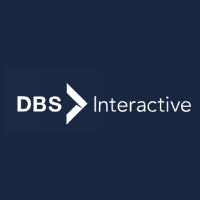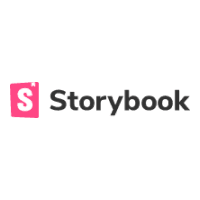Blogs & Articles
Culmination of long and short-form blog posts circled around the topic of accessibility compliance, inclusivity, and disability.

Disability Employment
4 steps to more inclusive, precise language
When it comes to making the workplace more diverse, equitable, and inclusive, brands and agencies sometimes fall into the trap of “checking the box” rather than focusing on building inclusive behaviors and mindsets that translate to employee experiences.

Article
Designing an Inclusive Skin Tone Palette
A case study about a process for creating inclusive characters.

Article
Finger-Friendly Design: Ideal Mobile Touchscreen Target Sizes
In darts, hitting the bulls-eye is harder to do than hitting any other part of the dartboard. This is because the bullseye is the smallest target. This same principle can also apply to touch targets on mobile devices. Smaller touch targets are harder for users to hit than larger ones.

Article
Looking at WCAG 2.5.5 for Better Target Sizes
Have you ever experienced the frustration of trying to tap a button on a mobile device only to have it do nothing because the target size is just not large enough **and it’s not picking up on your press?

Article
How to design for touch
With a rise in the number of hybrid mouse and touch devices, it's getting harder to detect someone's preference for input type. For example, layouts over 1008 pixels are no longer just for a mouse. We should design for 'touch-first', and only when device detection can be guaranteed, make exceptions for people using non-touch where appropriate.

Article
Understanding Touch Targets
A touch target is anything a user can interact with, so it should be easy to click/tap. Strive for a touch target of at least 40x40pt and adjust as needed.

Article
Touch Targets on Touchscreens
Designing usable touch targets is the basis of all touchscreen (and therefore mobile) design. Ensure that all interactive elements are at least 1cm × 1cm (0.4in × 0.4in) in physical, rendered size and positioned with enough space from other competing touch targets to be easily and accurately acquired.

Article
Exploring WCAG 2.1 — 2.5.5 Target Size
Remember, bigger is better in this case! Use standard controls whenever possible. And, if you want to use very small controls, make an alternative, larger control available as well.

Article
Designing Tap Targets: Best Practices for UI Design
Tap targets play a key role in any app or website’s interface. Follow these design conventions to ensure a smooth user experience.

Article
Common Misconceptions About Touch
Touchscreens have been with us for decades—and they’ve been the mobile input method of choice for many of us for about 5 years. In fact, many junior designers and developers—or at least those who were late to the mobile party—have never owned a mobile phone for which buttons were the primary input method.

Article
Enhancing The Clickable Area Size
Have you ever tried to click or tap on an element (e.g.: button, link) and you realize that it doesn’t respond until you click on a specific area of it?

Article
Touch, Point, Click: Mouse vs Touch Screen Input - Mobile vs Desktop
The range of different devices used to access the web means we can never control how people will experience what we create – not only in terms of screen size, but also how they interact – touch or click?

Article
Understanding Target Size Under WCAG 2.2 and How It Affects People with Disabilities
A target is the region of a display that will accept a pointer action. Common examples include buttons and hyperlinks. When a target is too small or located near another target, users may experience issues when operating controls or navigating to another page

Article
9 InDesign Accessibility Mistakes Designers Make
Many designers who think they’re creating accessible InDesign files and PDFs really aren’t. Other designers, who are looking for help with document accessibility, don’t understand the process, which can cost their clients.

Article
How to design for global accessibility
Advancing accessibility through inclusive design

Article
Trans Inclusive design - Gender UI
This post focuses on making the case to remove the ‘gender question’ as well as some takeaways for building inclusive products.

Article
Mobile Accessibility - Understanding Today’s Standards and Best Practices
Best practices for website accessibility have been established on a global scale through various international guidelines and legislation, yet these standards have been slow to evolve and address digital accessibility for mobile devices.

Article
No Accessibility Without Disabilities
People who are tasked with remediating accessibility often have little experience of how people with disabilities actually use the web. This leads to overcomplicated solutions, as they underestimate the capabilities of disabled people.

Article
A case study on non-binary and transgender considerations in Fintech
This post focuses on a case study on non-binary and transgender considerations in Fintech.

Article
How My Temporary Disability Changed My Perspective
Accessibility can be tricky. There are plenty of conditions to take into consideration, and many technical limitations and weird exceptions that make it quite hard to master for most designers and developers.

Article
Mobile Screen Reader 101 - How a Blind Person Uses a Smartphone
This evolution of technology can only do so much. As powerful as they are, they can be useless for blind users like me when there are no accessibility and inclusion features. In this case, the key is for the mobile apps to be accessible.

Article
How to Ensure Telehealth is Accessible for the Deaf and Hard of Hearing
Yes, the pandemic will come to an end. No question about that. But telehealth is here to stay. And it's time to ensure it's accessible to everyone. It's a matter of life and death.

Article
Equal Entry’s Blog
Contributing to a more accessible world

Article
Tooltips in the time of WCAG 2.1
Tooltips have been a reliable source of web accessibility woes from the very beginning; or at least from the beginning of graphical web browsers.

Article
Reimagining Typography with Accessibility
Typography is one of the most important design elements of an inclusive digital experience. It is the foundation of an accessible reading experience.

Article
Accessible UI Basics for Users With Visual Impairments
Regional navigation, aria-labels and keyboard shortcuts can dramatically improve accessibility.

Article
What You Can Do About Website Accessibility Right Now
Making your digital assets accessible involves a commitment on your part.

Article
Social model of disability
The social model of disability is a way of viewing the world, developed by disabled people. Scope's Everyday Equality strategy is based on this model of disability.

Article
Accessibility and usability considerations for disabling buttons and inputs
Broadly speaking, it’s best not to disable buttons or inputs. Instead we can allow data entry and provide helpful error text (either inline on-the-go or on form submission).

Article
The story behind the accessible design
The history of accessibility and why we need to build better products

Article
Accessibility testing with Storybook
Web accessibility is not easy – it can be overwhelming to balance accessibility with impending deadlines, business goals, and tech debt.

Article
Understanding the key differences between Accessible Design and Inclusive Design
Despite being part of the same family, these two siblings have some very real and important differences.

Article
Accessible Design Systems - Look Good While Doing Good
Design is powerful. We chat with our friends and loved ones halfway across the globe, we can check on our pets while at work, and sync as a team in a pandemic. And design systems let us scale those experiences seamlessly to any device or touchpoint.

Article
How accessible are your designs?
These handy flashcards provide bitesize accessibility tips.

Article
How to test for accessibility with users at every design stage
A research template to test solutions for people with disabilities

Article
Twitter’s new font and Last of Us 2 - An accessibility lesson to be learned
An important aspect of the new update is that it’s presented as not just a visual facelift, but an accessibility improvement.

Article
How to make images accessible for people
When you Tweet photos using the Twitter app for iOS or Android, or on twitter.com, you have the option to compose a description of the images so the content is accessible to more people, including those who are blind or low-vision.

Article
UX=Accessibility & Accessibility=UX
Guidelines and guidance are tools that can help with understanding the options and current best practices.

Article
How to make your everyday images and visual content accessible
From alternative text to figcaptions, here are some best practices to implement, as well as some of the key things to avoid, when making visual content accessible.

Article
Accessibility Micro-coaching
A technique for honing everyone’s accessibility skills